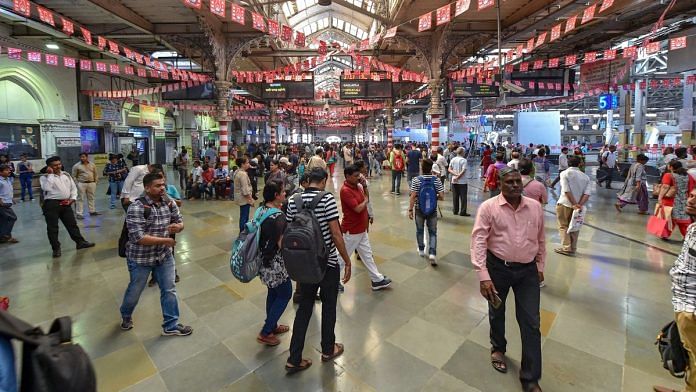10 years since 26/11, ThePrint looks at where the key stakeholders — the masterminds, the blast sites, and the people of Mumbai — stand now.
New Delhi: Even 10 years on, the image of a colossal Taj Mahal Palace hotel in Mumbai wrapped in layers of smoke continues to haunt many.
The Taj hotel was among the several spots in the country’s financial capital that the 10 attackers, part of the Lashkar-e-Taiba operating out of Pakistan, targeted on that fateful night of 26 November 2008.
The 10 terrorists had entered Mumbai via the sea, and apart from the Taj, hit the Chhatrapati Shivaji (railway) Terminus, the Oberoi-Trident Hotel, Cafe Leopold, Nariman House and the Rang Bhavan Lane near Cama Hospital and St Xavier’s College.
A decade since the brutal attacks, ThePrint looks at where some of the primary stakeholders — the masterminds, the blast sites, and the people of Mumbai — stand now.
Also read: Kasab grinned as he fired at commuters, 26/11 witness remembers
In Mumbai, underlying fear remains
The 26/11 attacks, co-ordinated with bomb blasts, claimed 166 lives on that dreaded night in Mumbai. It continues to strike fear in the hearts of Mumbaikars.
Mumbai resident Rachita Vora, who works as the co-founder of India Development Review, recalls how her mother had to stay put at the INOX Mall at Nariman Point through that night.
“She had gone out to watch a movie when the blasts took place. The authorities asked everyone to stay back for the night,” Vora says. “She drove home on empty roads next morning at 4 am.”
Knowing that her mother was just a stone’s throw from the Trident Hotel wasn’t a pleasant feeling for Vora. “The incident hit really close to home and we were glued to the TV all night,” she told ThePrint.
Since the attacks, Vora feels a sense of heightened awareness: “The underlying fears remain, given how devastating the night was.”
Dhairya Thakker, who was out on the streets shopping for his birthday that falls on 26th November, said the incident shook him from the inside. “We were near Colaba in south Bombay, when an uncle called and alerted us saying something had happened at the Taj and that we should rush back,” he says.
Thakker, who now works at the National Health Agency in New Delhi, was born and brought up in Thane. “It took us four hours to get back home when it would usually take 1.5 hours,” he says. “The entire ride back was so scary. There were police barricades and checking at every few kilometres.”
The very thought of the incident, he says, is “terrifying and unnerving”.
“I didn’t even realise when my birthday got over. The entire next week was so traumatising, especially when we heard of the cops being shot in their cars,” Thakker says.
Also read: Among 26/11 casualties: Honour among journalists
The men behind the attack
Of the 10 men behind the attack, only one survived that night.
The man, Ajmal Kasab, would go on to become synonymous with the attack. Much of what the forces learnt about the attack was through his testimony. Kasab was hanged in Yerwada jail in 2012.
Another important name that emerged during the investigations and continues to remain relevant is that of David Headley.
The American of Pakistani origin was interrogated by India’s National Investigation Agency (NIA) in June 2010. The interrogation strengthened the stand that the Lashkar-e-Taiba was responsible for the attacks. It also revealed names of other Pakistani officials allegedly complicit in the planning of the attack.
After years of trial, Headley was sentenced to 35 years in prison by a US district judge for his role in the 2008 Mumbai attacks. The Indian government has been consistently seeking his extradition to India but to no avail.
The interrogations of both Headley and Kasab led Indian agencies to the Lashkar-e-Taiba chief, Zakiur Rehman Lakhvi, considered the mastermind of the 26/11 attacks.
Lakhvi and the six others allegedly involved in the planning — Abdul Wajid, Mazhar Iqbal, Hammad Amin Sadiq, Shahid Jameel Riaz, Jamil Ahmed and Younus Anjum — were arrested by Pakistani law enforcement in 2008.
Out on bail since 2015, there were reports of Lakhvi resurfacing in 2018 and actively heading the organisation once again. Several other names were reported to be involved in the attacks but the status of their case remains vague.
Also read: Trial of Indian accused in 26/11 Mumbai attacks stuck even after 6 years
The safety upgrade
Some of the blasts occurred in the busiest spots of Mumbai. Ten years later, the security has improved in some of these places.
The Chhatrapati Shivaji Maharaj (railway) Terminus (CSMT), one of the worst affected, has seen many security upgrades, says Sachin Bhadole, senior divisional security commissioner of the Railway Protection Force (RPF).
“The integrated security system has been completely implemented at the station. This includes CCTVs, under vehicle scanning system, X-ray baggage inspection systems,” he told ThePrint.
Bhadole, however, acknowledges that given the enormity of the station and the footfall, it is impossible to check each and every person at the station.
“During peak hours, 6,000 people enter the station in a minute, it’s not feasible to keep do a thorough check of each individual. But we do ensure we do random checks.”



